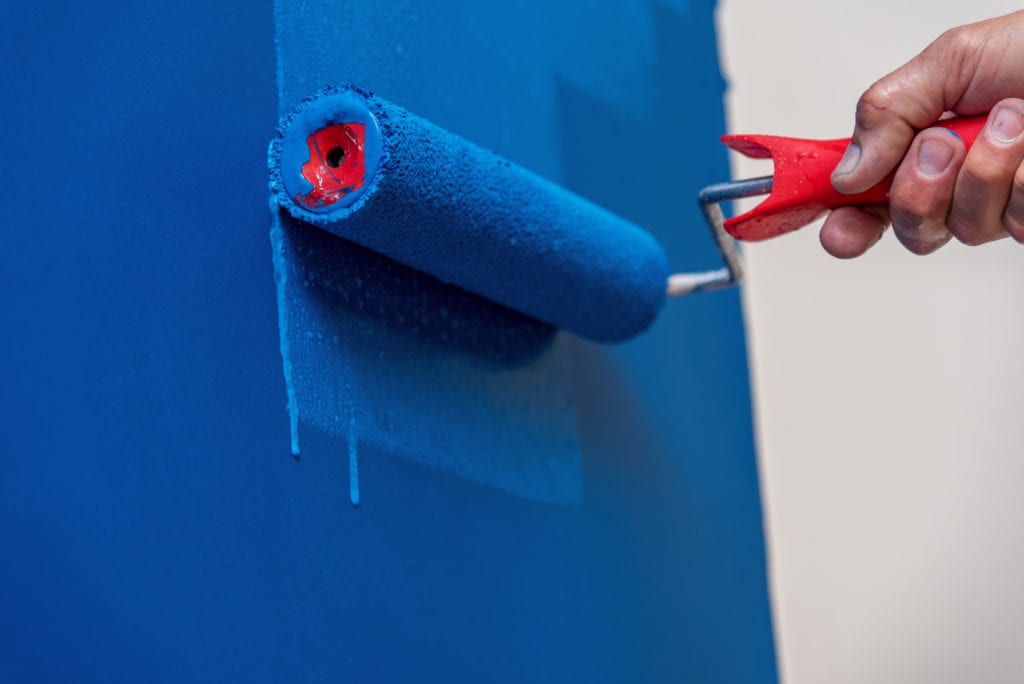Can You Paint Over Wallpaper?

Can you paint over wallpaper? This is one of the questions that a good number of homeowners grapple with when looking to refresh an outdated room. Applying wallpaper is a great way to cover imperfections and give your walls a new look. However, there may come a time when the wallpaper feels outdated, or the pattern seems tiresome, making it necessary to find ways of giving your room a stylish new look.
Since removing wallpaper can be a big chore, many people are painting over it as a way of updating the appearance of their spaces.
Painting over wallpaper, however, has been a taboo in the design industry for many years, with many experts advising against it. This perception has led to a debate that leaves many people wondering what the best option is when they have wallpaper on their walls and want to have a different color or pattern in their space.
So, can you paint over wallpaper?
The short answer is yes. Painting over the old wallpaper will not only spare you the effort associated with removing the wallpaper but also eliminate the need to hire a cleaning service. Once you make the decision that you will go ahead and paint over your wallpaper, proper preparation and priming will be critical to achieving beautiful results. Learning more about the process will also help to ensure that the results are long-lasting. To keep your walls looking good, you must ensure you have the tools and techniques required to do quality work.
Before painting over your wallpaper, you should take the time to consider whether this is the best option. If removing the wallpaper would damage the wall or worsen the problems that lie underneath, you should consider painting over it. Or if the old wallpaper is still in good condition and you don’t have enough time to strip the entire wall and sand the surface, painting over it may be a better option.
What kind of paint do you use to paint over wallpaper?
The paint you choose for this project is important — you want it to both achieve your desired new look and stand the test of time. That’s why your best choice is an oil-based paint.
But before you start painting, thoroughly prep your walls for the job. Make sure to start with an oil-based primer. This will help cover the wallpaper’s pattern and seal it against moisture from the paint. It will also give the paint something to adhere to.
Note: Oil-based paints and primers have strong fumes. Use them in well-ventilated areas and wear a respirator when painting.
How to properly paint over wallpaper
Once you’ve decided to paint over your wallpaper, you will still need to know the proper techniques. Here are the most important steps to follow during the process.
Step 1: Prepare the wallpaper surface
The first step would be to ventilate the work area by opening windows or turning on a box fan. Then, examine the surface of the wallpaper for bubbles, cutting away the bubbled areas using a knife. Patch any imperfections in the wall using a drywall joint compound, and then sand it after it sets. Use sandpaper to level seams and edges with the rest of the surface. If you have any loose wallpaper, add extra adhesive to the back and let dry.
Step 2: Clean your wall thoroughly
Use a damp cloth to wipe the wallpaper then clean your wall thoroughly using a solution of trisodium phosphate and water. Let the TSP mixture dry completely.
Step 3: Prime your surface
Apply a coat of primer and examine its coverage after the coat dries. If the wallpaper pattern still shows, apply a second coat and let it dry for 24 hours.
Step 4: Paint
Once the primer is completely dry, use a roller or paintbrush to apply a coat of oil-based paint over the surface. Blend overlapping strokes to achieve even coverage and cover any visible patterns.
Step 5: Let dry completely and then apply a second coat
Allow the first coat of paint to dry before applying the second one. Evaluate the paint coverage and decide whether additional coats are necessary. Allow at least six hours for the paint to dry between coats.
The bottom line
While it’s possible to paint over your wallpaper, the decision will depend on several factors. These include the condition of your wall, the condition of the old wallpaper, and whether you have the bandwidth to remove the old wallpaper. Painting will probably be the most efficient (and least messy) option, so make sure you have the right tools and techniques to paint over your wallpaper for a quality finish.
Frequently Asked Questions
Why is my wallpaper bubbling when I paint it?
Your wallpaper will bubble if you do not seal the adhesive in the paper from the moisture in the paint. This moisture will loosen wallpaper glue, resulting in peeling or bubbles.
Can you paint over a wallpaper border?
Yes, you can paint over a wallpaper border. However, before doing so, you should apply primer thinly and evenly while paying attention to problem areas.
What is paintable wallpaper?
Unlike your old wallpaper, paintable wallpaper is specially designed to allow you to add a coat of paint over it. Paintable wallpaper covers cracks and imperfections on your walls and has the right thickness to cover defects and discolorations when you want to add elegance to your room.
How long should I wait before painting over paintable wallpaper?
Once you’ve hung paintable wallpaper, you should wait at least 36 hours before painting it. This will allow the adhesive to dry, effectively keeping the paper from bubbling.
When is it okay to paint over wallpaper?
One of the instances when painting over wallpaper is a good idea is when the wall is damaged, and removing the existing wallpaper will make the problem worse.



